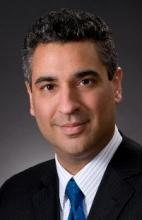The Affordable Care Act provided $1.5 billion through September 2015 to the National Health Service Corps to train more primary care providers via scholarships and loan repayment assistance. In return, these physicians and other providers pledge to serve in Health Professional Shortage Areas.
Dr. Atul Grover, the chief public policy officer at the Association of American Medical Colleges (AAMC), discussed the impact the new funding is having on the primary care workforce.
Question: The ACA sets aside $1.5 billion over 5 years to expand the National Health Service Corps (NHSC). Is that money dedicated to the NHSC or could Congress divert it for other purposes?
Dr. Grover: The ACA created a mandatory fund for the NHSC that more than doubles previous funding levels, starting with $290 million for fiscal year 2011 and increasing by $5 million each year through fiscal year 2015. As it is currently structured, that money is dedicated to NHSC scholarships and loan repayment awards. But what Congress giveth, Congress can taketh away. Congress could rescind this funding directly through an annual appropriations bill or repeal the ACA in its entirety.
Question: What will happen in fiscal 2016 when the funding expires? Will enough progress have been made in bringing physicians to underserved areas?
Dr. Grover: Starting next year, the NHSC’s entire budget will be tied to the ACA fund and the program faces a severe funding cliff in fiscal 2016. Congress will be tasked with finding new money for the program – at least $310 million to prevent a cut in annual NHSC scholarship and loan repayment awards. If Congress returns NHSC funding to the annual appropriations process, it will face an already strained federal budget and be pitted against other programs of importance to medical students and academic medicine, such as Title VII health professions training and the National Institutes of Health.
Question: After the service obligation expires, do physicians typically continue to practice in these underserved areas?
Dr. Grover: A number of factors influence physicians to practice in underserved areas, including personal history, mentorship, and putting down social roots in these communities. The NHSC has been a very successful recruitment tool to give young physicians exposure to this type of practice setting and "pull" their foot in the door, so to speak. According to NHSC clinician retention surveys, over three-quarters of NHSC providers stay at their service site, another NHSC site, or in an underserved area after completing their service obligation.
Question: The ACA raised the amount of the annual loan repayment from $35,000 to $50,000. Is $50,000 per year enough to attract primary care physicians who have significant education debt?
Dr. Grover: The NHSC loan repayment award not only serves as a recruitment tool for physicians to practice primary care, but also to practice in underserved areas. Medical students graduating in 2011 had an average educational debt of $162,000, but will repay between $300,000 and $450,000 over the life of the loans depending on the repayment plan. NHSC loan repayment awardees can receive up to $170,000 over 5 years of service right out of residency, erasing their student loans, but could save even more on student loan interest that they won’t have to pay.
Question: The ACA also allows teaching to count toward the NHSC obligated service. How will that encourage more physicians to pursue this path?
Dr. Grover: The ACA reauthorized the NHSC with several changes designed to increase flexibility and allow for additional physicians to participate in the program. Counting teaching time as well as half-time service toward the service obligation will expand the program to physicians who are unable to practice full time at NHSC sites. The NHSC also recently announced that the program is expanding to include outpatient clinics at critical access hospitals. Hopefully, these changes will open doors to faculty, parent-physicians, split practices, as well as primary care subspecialists, and ultimately improve access to care for our nation’s underserved.
Question: The Health and Human Services Department estimates that by fiscal 2016, this investment will lead to an increase of 12,000 primary care providers, nurse practitioners, and physician assistants. How much of that will be for physicians versus other health care providers?
Dr. Grover: The NHSC makes award determinations based on the demonstrated need of the facilities in underserved areas that are seeking NHSC providers and does not preallocate awards by discipline or specialty. Historically, physicians have made up a quarter or more of the NHSC field strength. As a direct result of the ACA funding, physicians are exclusively eligible for the new NHSC Student to Service Loan Repayment Program (S2S LRP), which provides up to $120,000 during residency in exchange for a 3-year service commitment.


